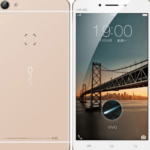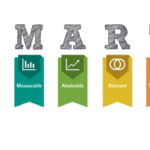Touchscreens are very much a part of our lives these days. It’s easy to forget how incredible the technology is and the way that it has changed our lives over the last decade. Here is a look at the science behind touchscreen technology along with some of its major uses.
Different Types of Touchscreens
There are a number of types of touchscreens in use today. You may not notice the difference between them, but they all use different technology to work.
The essential science is that when you touch a screen, you are completing an electrical circuit and making a current flow. The current varies depending on where you press the screen, and it is very similar to a traditional keyboard.
However, touchscreens have to sense your touch in a way that is invisible, and there are two main technologies.
Resistive is the most popular touchscreen technology. This is like a see-through keyboard that has polyester plastic on the upper layer. It is bonded to conducting glass and has a membrane between the layers. By touching the screen, you force the two layers together, completing the circuit.
Capacitive screens are made of multiple glass layers. Both the inner layer and outer layer conduct electricity, and an insulator separates the layers. Your touch changes the electrical field, and you can touch them in more than one place.
Other types of touchscreen include infrared, near-field imaging, and surface acoustic wave technology.
What Are the Benefits of Touchscreens?
Touchscreens have a few key benefits that have made them so useful and popular in our daily lives:
- They are very natural to use and easy for people to understand. They provide the exact number of options we need to perform a function, and they are less confusing as a result.
- Touchscreens can change according to the task at hand. For example, on a smartphone, you can change the application to what you need and then use touch to perform a function.
- They are fast, allowing us to operate devices much quicker.
- They save space because there is no need for a keyboard and mouse, so they provide an all-in-one solution.
- They are useful for people who have difficulty using technology, such as elderly people or people who have problems with their vision.
- Touchscreens are tough and durable, and they are easy to look after.
Best Uses for Touchscreens
There are many ways that we use touchscreens in the modern world. The most obvious is in smartphones, tablets, and now computers, but there are others.
- ATMs, many of which now use touchscreens
- Ticket machines, such as buying train tickets
- Electronic voting booths
- Self-service machines in stores
- Cars, where touchscreen displays are used in modern vehicles like the RAM 2500
- Industrial settings, such as in the aerospace and transport industries
Touchscreens Make Our Lives Easier
Overall, touchscreens have made our lives easier. They have allowed us to access incredible technology like smartphones and carry out complex actions with ease. Touchscreens are already everywhere, but we are sure to see even more of them over the years as technology continues to improve.
Jordan Warren is an office worker by day and a tech ninja by night! He’s the man who is seemingly on call 24/7 for his friends and family who need his tech support!







